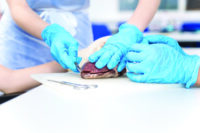Choosing the right biotechnology equipment can be a real challenge. Carolina will help find exactly the right equipment and provide all the support you need.
Choosing the right biotechnology equipment for a particular lab exercise–or outfitting an entire laboratory–can be a real challenge. Fortunately, the staff here at Carolina understands the demands of science educators. With our diverse selection of quality products and world class service, we’ll help find exactly the right equipment and provide all the support you need.
Not sure what kits to use with our equipment? Start with these 2 guides: “Which Electrophoresis Kit Is Right for You?” and “Which PCR Kit Is Right for You?” to help you choose a kit that fits.
Want more assistance? Call our customer support team at 800.334.5551 and let our staff and technical experts help.
Top 3 Biotech Basics
Whether you are a veteran biotech educator or you’re new to teaching this exciting subject, there are 3 things that every lab must have to complete introductory to advanced biotechnology activities.
Power Supplies
* May require filter
Incubators and Water Baths

Carolina Digital Incubators
Thermal Cyclers
If you’re looking at performing Polymerase Chain Reaction (PCR) in the classroom, Carolina offers units that accommodate 8 samples all the way to 96 well plates of differing dimensions. Most feature a touch screen interface to input custom programs. For a unique, portable experience that uses your smart device, consider the miniPCR® Thermal Cycler.





